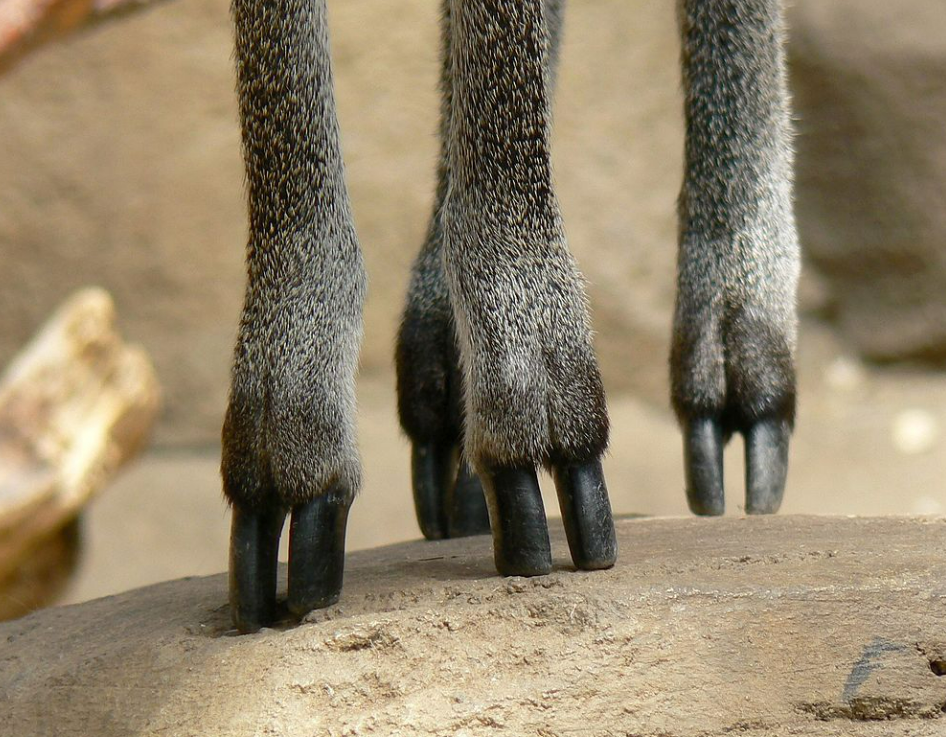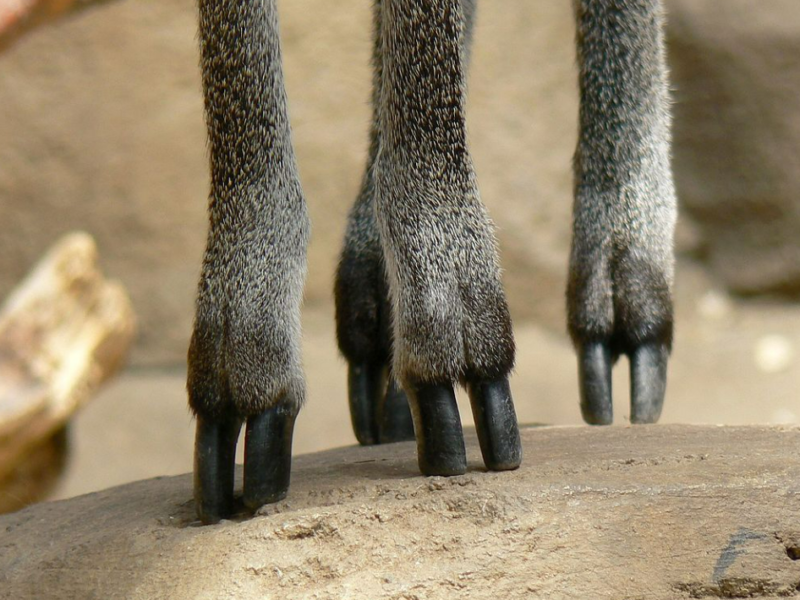
Two klipspringers (scientific name: Oreotragus oreotragus) in habitat. Photo: W Tarboton
Pointe technique is a ballet term which refers to dancing on the tip of the toes. It takes extensive training and practice for ballerinas to master this technique. Meet nature’s own ballerina, the Klipspringer (meaning ‘rock jumper’). This little southern African antelope is born tippy toeing on only a part of its hooves and it is for a very practical reason too. Its habitat is mostly rocky outcrops and steep mountainous terrain. This means it has to be able to perform fancy footwork to navigate its preferred territory. With hooves of about 20 mm in length and tracks shaped like rain drops this dainty rock hopper can land on very small ledges. Only the front half of the vertically rising hoof makes contact with the ground and the sole acts like a suction cup to give traction. When threatened it can be seen freezing temporarily before ascending very steep areas hopping from one spot to the next followed by making sharp whistling sounds. It is estimated that a Klipspringer can leap up to 3.6 m into the air to escape predators such as leopard and brown hyena.

Klipspringer hooves (source: Wikipedia)
It is also the only horned ungulate that can stretch both front legs forward and parallel to each other when lying down. Goats, which are not related, can also do this. Another party trick is that the Klipspringer can bring its front and hind legs together when standing on one spot which comes in handy when living on the ledge. Its coat consists of coarse hollow hairs that are flattened and stringy. It is believed that this helps with insulation and thermoregulation as its habitat among rocks can be very cold and hot. It is also believed that the hairs act like shock absorbers and cushion its body from any abrasion from sharp rocks.
Klipspringers weigh about 11 to 13 kg and stand up to 600 mm tall at the shoulder. They are territorial and have only one mate. On Mountainlands a pair is often filmed on a static trap camera overlooking a creek. Only males have horns and one is featured in this short video clip below.

